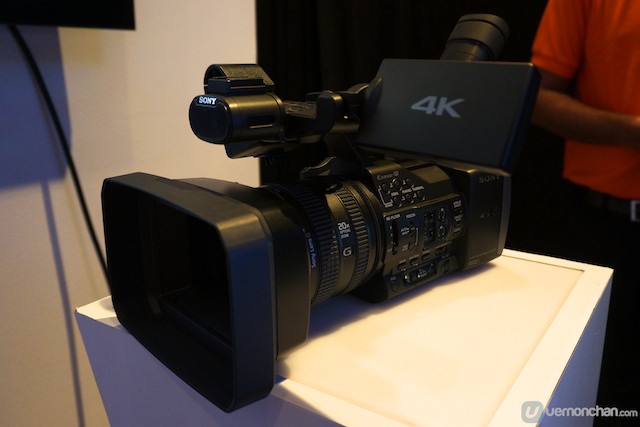The movie industry’s push toward higher resolution film has flowed from Hollywood and Netflix to the halls of Cal State Long Beach’s film and electronic arts department, which has acquired more 4K resolution cameras for its students to use.
This is a part of the department’s mission to ensure that its graduates are entering their careers with knowledge of the industry’s most current standards for equipment. Netflix now requires that all documentaries be filmed in 4K resolution, and even productions that will not deliver images in the higher resolution use the cameras because of the flexibility they provide with color timing and reframing shots.
“It’s keeping up with industry standards,” Dr. Jerry Mosher, chair of the film and electronic arts department said. “In a way, it’s kind of future-proofing our student films.”
The department’s current 4K resolution inventory consists of one Red Scarlet camera, which an alumnus employed at camera manufacturer Red helped facilitate a deal for, and six Sony cameras recently purchased for the major’s creative nonfiction production classes through a $30,000 grant from the Hollywood Foreign Press Association.
Each new camera presents unique challenges that filmmakers have to overcome, which is why the department wants to get these tools into students’ hands before they enter the professional world.
“Some of the digital cinema options have very extensive menus so you just have to learn the user interface of the particular camera,” David Waldman, cinematographer and film professor, said. “You have got to learn to cull through all those menus to get to the function that you want, and that shouldn’t be the primary focus of a creative pursuit.”
Waldman said that providing experience with new technology will make students comfortable with a camera’s settings and allow their attention to focus on producing the best image possible.
Equipment manufacturers are constantly innovating, so technology fresh off of the assembly line becomes outdated faster than ever before.
“It’s kind of like your phone,” Kent Hayward, assistant professor of film and electronic arts, said. “The new [camera] comes out and it’s awesome, everybody gets it. Then after a couple of years this operating system doesn’t work as much, or it’s not compatible with things anymore, or you dropped it.”
Because buying every new camera would be financially impossible, the cinematography track’s focus remains teaching students how to capture compelling images and stories with any format.
“The infrastructure for analog film cameras has completely broken down, there’s nobody making the parts anymore and if we want to repair them we have to send them to the east coast,” Mosher said. “The batteries for these are no longer being serviced.”
The department uses film cameras sparingly these days, recently making the decision to stop repairing models that break down because the parts for them are no longer produced.
“It might only be a thousand dollars here or there [to repair film cameras]. But that’s money that could be spent towards digital cameras,” Mosher said. “It’s a shame because a professional film camera could literally last decades.”
Though they may one day be nonexistent, members of the department still see value in teaching with film cameras.
“To me, there’s a certain amount of rigor that’s required when you’re shooting on film that may not be required when you’re shooting digitally,” Waldman said.
Waldman elaborated on this by saying that shooting on film forces students to pre-visualize shots, develop an aesthetic and test their framing in advance; all of which can help them become stronger cinematographers with better projects.
“So largely acquiring [footage] digitally can promote sloppiness, it can promote a little bit of laziness, whereas shooting film promotes rigor and pre-planning and previsualization,” Waldman said. “Those are skills that you can absolutely apply to shooting digitally, so having the experience of having done it on film gives you some good habits when you move into shooting digitally.”
To keep the program affordable, Mosher said that the department uses grants from organizations such as the Hollywood Foreign Press Association and funds from the Student Excellence Fee that is charged as a part of tuition.
“If we can provide [students] with all of the equipment that they need, then that money can be used for location fees, permits, catering and transportation,” Mosher said. “Surprisingly, on a student film the biggest expense is feeding people.”




